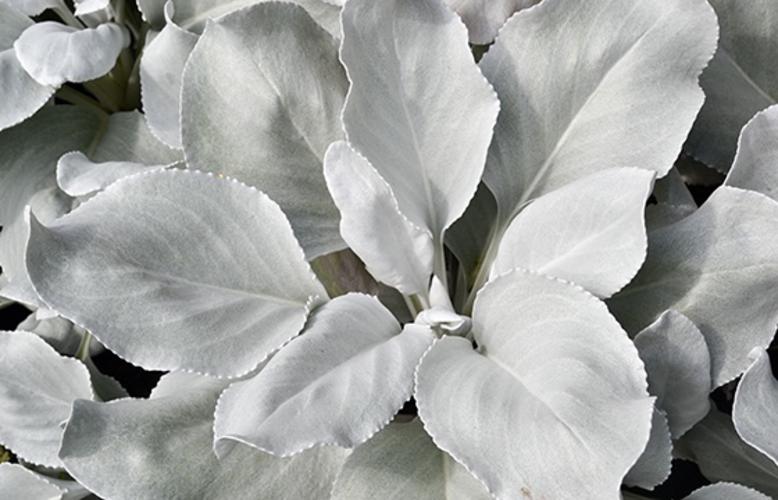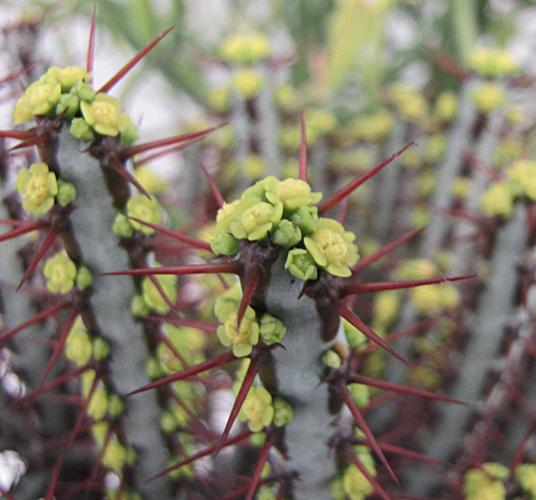March 1, 2021 by IG
Pantone in the Garden: That 2021 Mood
For over 20 years, The Pantone Color Institute has announced a color of the year based on analysis of trends in fashion, art, all areas of design, the entertainment industry, popular travel destinations, as well as lifestyle and socio-economic influences, emerging technologies and upcoming events that capture worldwide attention. There are even more factors that play into Pantone’s selection, which you can read about on their website. The way I understand it, it’s not entirely a matter of trend forecasting, but social commentary, as well. Some years, I’ve felt like Pantone really captured the zeitgeist, and others — I wasn’t so sure. In the past, I’ve mostly looked at Pantone’s selections in terms of fashion. Are all the “cool kids” wearing Pantone’s color of the year? Are all the stores stocking that color? But in this phase of my life, I wonder if Pantone’s choice draws any inspiration from garden design and popularity in flower colors. And does the color of the year announcement influence gardeners’ and florists’ choices?
Two years ago, Pantone selected Living Coral as color of the year and I saw gardeners and florists respond very favorably, posting pictures of glorious coral dahlias, roses, and poppies on blogs and on Instagram. Longfield Gardens declared Coral Flowers: The Trending Color Your Garden Needs Now on their blog. Mail order floral companies like Bouqs and wedding-centered florists embraced and publicized the color. It was an easy bandwagon to hop on. Everybody loves coral flowers.
For 2021, Pantone picked two colors (for only the second time since they began the yearly endeavor) and I don’t see any enthusiasm coming from plantfluencers, gardeners, or florists. The colors are a medium grey called Ultimate Gray and a clear, sunny yellow called Illuminating.

“The union of an enduring Ultimate Gray with the vibrant yellow Illuminating expresses a message of positivity supported by fortitude. Practical and rock solid but at the same time warming and optimistic, this is a color combination that gives us resilience and hope. We need to feel encouraged and uplifted; this is essential to the human spirit,” says Leatrice Esenman, executive director of the Pantone Color Institute. It seems that this year’s selections are more a case of symbology than trend analysis.
Unlike the coral colored blooms of 2019, yellow flowers aren’t universally loved. While English speaking countries today associate them with joy, optimism, and friendship, in France, yellow bouquets are a symbol of jealousy and in Mexico, yellow flowers are associated with death. Even gardeners who pay no mind to metaphor often hesitate to plant yellow flowers. Kath LaLiberte writes, “Not everyone is a fan of yellow flowers. In fact, some people refuse to allow them in their gardens. It’s not hard to understand why. Yellow is the color our eyes see most readily — even more than red or orange. And once yellow grabs your attention, it won’t let go. While yellow can be wonderful in small doses, it can quickly become overwhelming. For gardeners, this can make it a challenging color to work with.”
I have to admit, I’ve shied away from yellow flowers in the garden, but I think they deserve another look. And what about gray in the garden? Concrete and cast stone pots, fountains, and statuary are never really passé, they’re classics and can be historical or contemporary in style to suit any garden and gardener. Plus, containers with zinc and galvanized finishes are a big trend right now. On the other hand, I don’t expect an influx of yellow flower pots to hit the market this year.
Whether Ultimate Gray and Illuminating are actually going to influence garden design or plant trends is certainly up for debate, but I’d like to take this cue from Pantone to highlight some plants with unusual gray foliage and yellow blooms. And if you make it all the way to the end of this post, plants with yellow foliage and a few with (almost) gray blooms await your love and attention.
Gray Foliage, Yellow Blooms
I asked our in-house botanist, Passiflora to tell us what makes foliage appear gray. He explained that there are two main culprits — either an abundance of trichomes or a build up of epicuticular waxes. “A dense covering of trichomes on the surface of a plant slows the air directly around the plant and prevents some water loss during transpiration. This dense covering of trichomes frequently comes off as a silver or gray colour…Epicuticular waxes act as an intermediary barrier between a plant and its environment, and are a handy tool for plants in a plethora of situations.” Passi adds that the development of an extra thick wax layer is especially apparent in some asters or euphorbia species, which you’ll see in the examples below. Look for a post explaining the subject of gray foliage more in depth on the blog soon.
Helichrysum italicum

Not to be mistaken for the curry tree Murraya koenigii, the curry plant Helichrysum italicum indeed smells like curry powder. However, this Mediterranean native plant isn’t used for curry dishes and doesn’t taste very good. Young shoots and leaves can be used sparingly for flavoring mayonnaise or stewed with meat, fish, and vegetables until they have imparted their scent, then removed before serving. This plant grows up to two feet tall and produces clusters of yellow flowers in summer, which can be dried and preserved, but aren’t as showy as their straw flower cousins. H. italicum is a tender perennial, hardy in USDA plant hardiness zones 7(or 8, depending who you ask)-11.
Senecio candicans

Like helichrysum, senecio are in the Asteraceae family. S. candicans, also known as Sea Cabbage is a succulent plant native to India. It can be grown as a perennial in zones 8 and above but can also be grown as a houseplant. Yellow flower clusters are produced in the summer. A particularly striking cultivar is ‘Angel Wings,’ with broad, almost white, velvety foliage.
Artemisia schmidtiana

This plant, commonly referred to as Wormwood is also part of the, you guessed it, Asteraceae family. But this one hails from Japan. It’s a semi-evergreen perennial and produces ornamentally insignificant little yellow blooms in the summer. The cultivar ‘Silver Mound’ grows to a height of 10 inches and is hardy in zones 3-7. ‘Nana’ maxes out at six inches in height and is hardy in zones 4-8.
Santolina chamaecyparissus

Also known as Lavender Cotton, this Mediterranean subshrub produces ¾ inch yellow ball-like blooms in the summer. Unlike those of the Asteraceae members above, these flowers are quite showy, held atop six inch stalks. The evergreen silver foliage has a musky fragrance making santolina a popular choice for herb gardens, but the plants can also be used as dwarf hedging and is well suited to rock gardens. S. chamaecyparissus is hardy in zones 6-9, provided with excellent drainage.
Tanacetum densum ssp. amanii

Also known as Partridge Feather for its unique feather-like foliage, this xeric plant in the 32,000 species strong (and counting) Asteraceae family is native to Turkey and winter hardy in zones 4-9. It grows as a ground cover and keeps its attractive foliage year-round. In late spring/early summer, it produces small yellow button-like blooms.
Euphorbia rigida

This plant is not in the Asteraceae family! Also called Upright Myrtle Spurge, E. rigida is native to the Mediterranean Basin and the Middle East, where it’s considered a weed. However, in temperate regions of North America and Europe, it’s valued as an ornamental plant for its evergreen (eversilver?) spiraling leaves and acid yellow spring inflorescence, receiving an RHS Award of Garden Merit. E. rigida is hardy in zones 7-11 and grows to two feet tall.
Euphorbia aeruginosa

E. aeruginosa is a South African native small shrub. The grey photosynthetic branches are repeatedly branching and have reddish spines. The inflorescences, as with all euphorbias are “false flowers” called cyanthia. This species is only hardy in zones 10-11.
Acacia argyrophylla

A drought and wind tolerant South Australian native shrub, this acacia — also known as Silver Mulga — grows to about 10 feet tall, but a dwarf variety exists as well. Mimosa colored flowers bloom in spring in clusters of 25-45. This shrub has a narrow range of hardiness, zones 9-11.
Yellow Foliage
Hosta

According to the late horticulturalist Van Wade, hostas are the most popular hardy perennial in the United States and golden leaved ones were his favorite. Their leaves contain fewer food-producing chloroplasts and require a bit more sun to bring out their color than green and blue leaved hostas. Hostas are native to China, Japan, and the Korean Peninsula. They are widely cultivated with more than 6,100 varieties registered with the American Hosta Society. The cultivars range from miniatures as small as four inches across to giants that can exceed six feet in diameter. Hostas are hardy in zones 3-8.
Hechtia huamelulaensis

Hechtia is a small genus of the family Bromeliaceae. H. huamelulaensis, which was only described in 2014, comes from low elevations in Oaxaca, Mexico. It has striking chartreuse foliage, arranged in a globular rosette and grows up to two feet in diameter.
Agave attenuata ‘Raea’s Gold’

A. attenuata are succulents native to central Mexico. Unlike most agave, this species’ foliage has no terminal spines or teeth and produces curved flower spikes which earn it the common name of Foxtail Agave. ‘Raea’s Gold’ turns a buttery yellow in full sun and grows to over 3 feet in diameter, forming multiple rosettes. It is only hardy down to zone 9.
(Almost) Gray Flowers
Hoya pubicalyx

Hoya pubicalyx is native to the Philippines. Several cultivars of H. pubicalyx bloom in nearly gray shades including ‘Red Button,’ ‘Black Dragon,’ and ‘Chimera.’ This species makes a great houseplant, requiring little light, vining vigorously and reblooming throughout the year. It’s hardy in zones 10-11 and prefers 60-70% humidity.
Stelis argentata

S. argentata are miniature epiphytic orchids with flowers ranging from a silvery white to dark red. The flower spikes bare numerous ½ inch flowers. This species is native to Central and South America.
Papaver rhoeas ‘Amazing Grey’

The Shirley poppy is a cultivar group derived from the European wild field poppy — Papaver rhoeas. It was created by the Reverend William Wilks, vicar of the parish of Shirley in England in 1880 and cultivation has continued since. ‘Amazing Grey’ has diaphanous crinkled lavender-grey flowers, ranging from pale to “storm-cloud grey,” as listed on the Select Seeds website. The flowers can be single, semi-double or double. P. rhoeas is an annual found in much of the world, from Africa to temperate and tropical Asia and Europe.